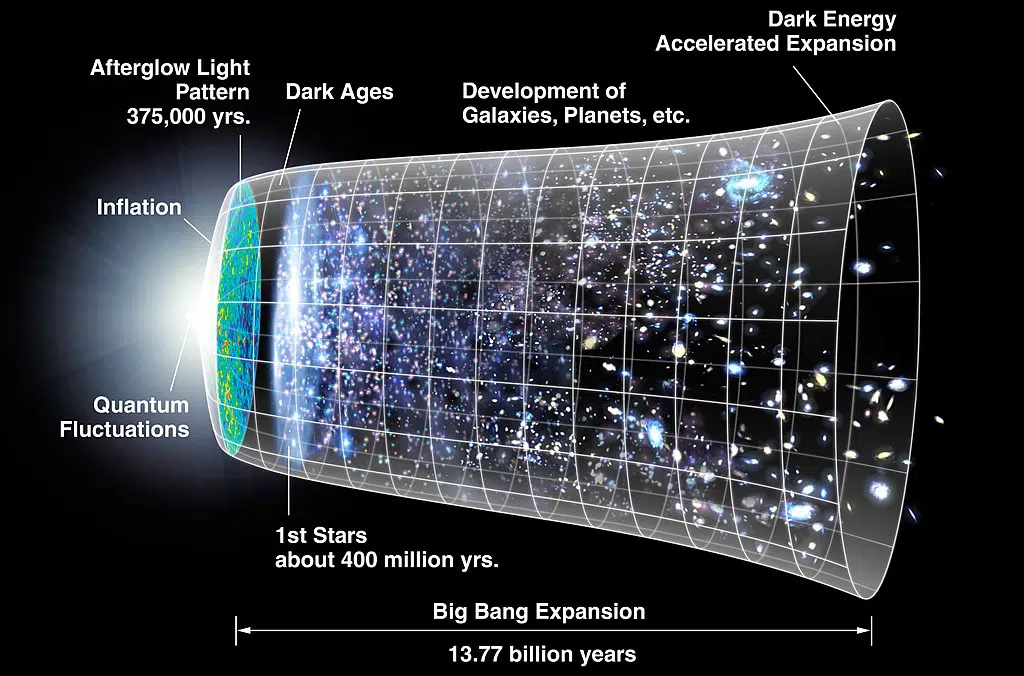
A mysterious particle called the X Particle, which existed just milliseconds after the Big Bang was just detected this week inside the Large Hadron Collider, or LHC, in Switzerland.
The LHC is part of CERN (the European Organization for Nuclear Research). Scientists believe this is discovery is one of the keys that will allow them to know a great deal more about the earliest moments of the entire universe, just after it was created.
The Big Bang theory was first created by astronomer Georges Lemaitre, a Catholic priest, theoretical physicist, mathematician, astronomer, and professor of physics at the Catholic University of Louvain in Belgium.
Physicists who work at the world’s largest particle accelerator discovered approximately 100 of the X particles, which got their name because there is much still unknown about how they are formulated.
Detected among the trillions of other particles inside the LHC, they were found as a result of an enormous smashing together of lead atoms that resulted in a miasma of elementary particles called a quark-gluon plasma.
According to the scientists’ paper on the discovery, which they published on January 19 in the journal Physical Review Letters, when they can fully examine these primordial X particles they created, the researchers hope to create the most accurate understanding yet of the origins of the universe.
Yen-Jie Lee, a member of CERN’s collaborative team who is an experimental particle physicist at the Massachusetts Institute of Technology, said in a statement “This is just the start of the story.
“We’ve shown we can find a signal. In the next few years, we want to use the quark-gluon plasma to probe the X particle’s internal structure, which could change our view of what kind of material the universe should produce.”
X particles were created just a few millionths of a second after the Big Bang, at a moment when the universe was a superheated trillion-degree mass of plasma, full of quarks and gluons.
Eventually, these elementary particles cooled and combined into the more stable protons and neutrons with which we are familiar now.
However, before they cooled, there was a collision between some tiny parts of the gluons and quarks; when this happened they created unique particles known as X particles, which had very short lives.
The unknown that the scientists want to discover is exactly how these particles are structured.
The physicists at CERN recreated the conditions of a universe in its very inception, firing positively charged lead atoms at each other at enormous speeds, smashing them together in order to create many thousands of other particles in a recreated primordial cloud of matter.
Incredibly, even that was easier than looking through all the data that was collected afterward, when the physicists had to search among a staggering 13 billion head-on ion collisions.
Lee explained “Theoretically speaking, there are so many quarks and gluons in the plasma that the production of X particles should be enhanced.
“But people thought it would be too difficult to search for them, because there are so many other particles produced in this quark soup.”
They were helped by their knowledge of the specific decay pattern of the collisions, since the “daughter” particles created emanate out at very different angles than those produced by others. So the scientists made their own algorithm that was able to find traces of dozens of X particles.
Jing Wang, a physicist at MIT who co-authored the study, said in the statement “It’s almost unthinkable that we can tease out these 100 particles from this huge dataset, adding “Every night I would ask myself, is this really a signal or not? And in the end, the data said yes!”
See all the latest news from Greece and the world at Greekreporter.com. Contact our newsroom to report an update or send your story, photos and videos. Follow GR on Google News and subscribe here to our daily email!



